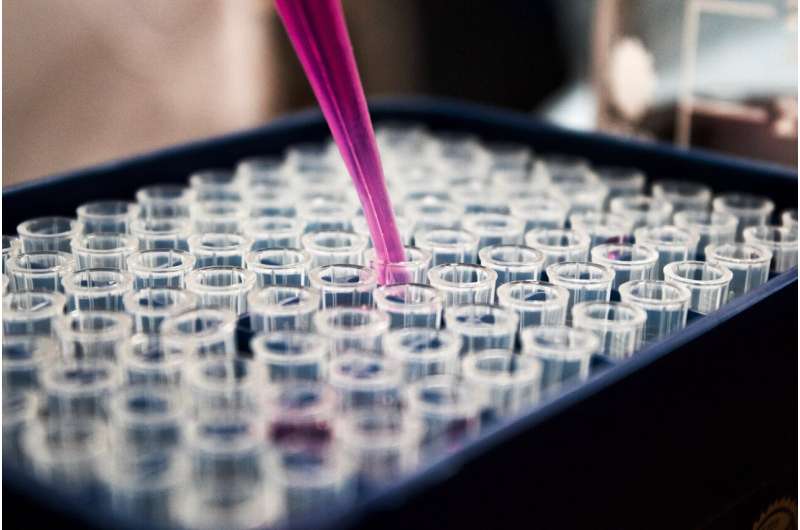This article has been reviewed according to Science X's editorial process and policies. Editors have highlighted the following attributes while ensuring the content's credibility:
fact-checked
peer-reviewed publication
trusted source
proofread
Biomarker found to help identify cells that can repair damaged blood vessels

Researchers have discovered a protein marker to help identify cells able to repopulate in patients with damaged blood vessels. Their findings, recently published in Circulation, could lead to new therapies for people with endothelial dysfunction, a type of disorder that contributes to coronary artery disease that may occlude with plaque and lack ability to carry sufficient blood into the heart tissue causing a heart attack.
"This study is the first to establish that a single, prospective marker identifies vascular clonal repopulating endothelial cells (CRECs)," said Chang-Hyun Gil, Ph.D., MS, assistant research professor of surgery at the Indiana University School of Medicine and co-first author of the study. "These exciting findings could lead to new cell therapies for repair of damaged vessels for patients."
The researchers analyzed the potential of endothelial cells, which make up the protective inner layer of blood vessels, that express a protein called ABCG2 to make colonies, self-renew and form vessels. These cells could form new blood vessels and contributed to the repair of heart tissue blood vessels after a heart attack.
"By analyzing the genes and proteins in these cells, we identified specific pathways involved in blood vessel formation and tissue regeneration," Gil said. "We discovered that ABCG2 involved in blood vessel development are more active in these cells compared to others, suggesting these specific endothelial cells have the potential to be used in repairing damaged blood vessels.
"AbcCRECs are becoming an important cell type to be considered for use in human patients suffering from a variety of diseases such as peripheral arterial disease, diabetes, diabetic proliferative retinopathy, acute kidney disease and cardiovascular disease."
"It is particularly important that this protein marker identified the CRECs in both mouse and human subjects," said Mervin C. Yoder, MD, Distinguished Professor Emeritus at the IU School of Medicine and a professor of surgery at the University of Pittsburgh.
"Few markers have been found that permit prospective isolation of endothelial cells with reparative properties in both mice and humans, making these findings exciting for future study."
The team has been studying these types of endothelial cells for more than seven years. Further experiments and studies are needed to better understand the functions and mechanisms of AbcCRECs. This will help in developing methods to apply these cells in treating vascular damage and diseases. Additionally, clinical trials are required to validate the therapeutic efficacy of AbcCRECs and explore how to apply the treatment to patients.
More information: Yang Lin et al, ABCG2-Expressing Clonal Repopulating Endothelial Cells Serve to Form and Maintain Blood Vessels, Circulation (2024). DOI: 10.1161/CIRCULATIONAHA.122.061833




















